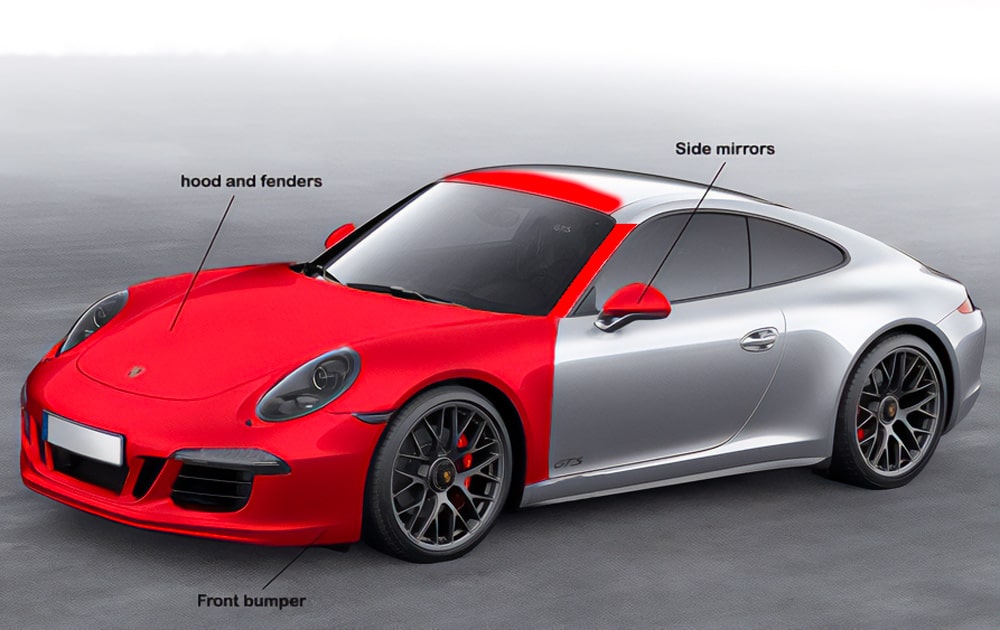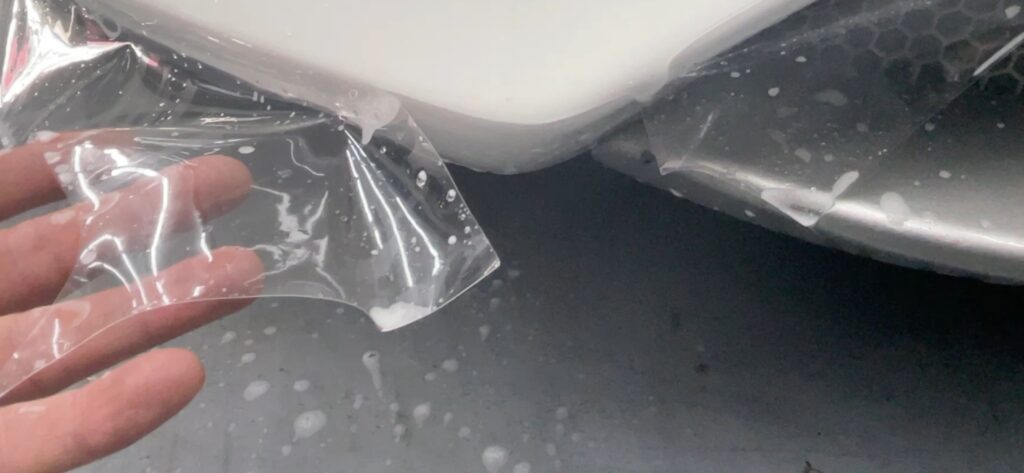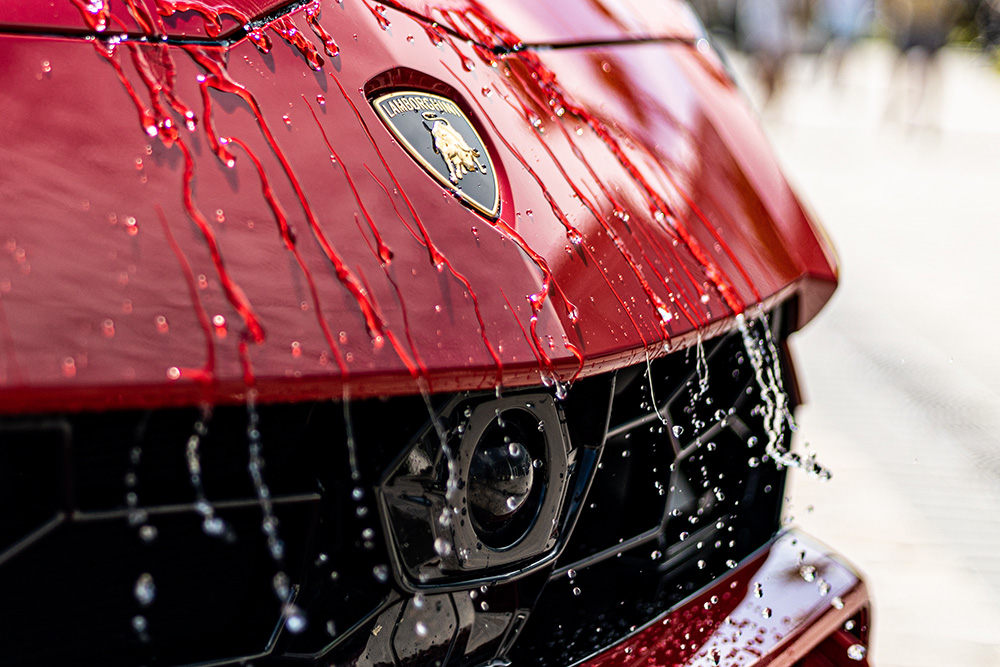Automotive Paint Protection Film Vs Ceramic Coating: A Guide To Automotive Paint Protection

(PPF) Paint Protection Film
(PPF) Paint Protection Film - Application Chart
Paint Protection Guide for automotive applications
The sparkling sheen of a new car’s paint job is a sight to behold, but the reality of the road is fraught with perils for that flawless finish. Enter the world of automotive paint protection, which is expanding with technologically advanced solutions promising to extend the life of that precious shine. For car aficionados and those seeking to safeguard their automotive investments, understanding the nuanced benefits of protective measures such as Paint Protection Film (PPF) and Ceramic Coating is crucial. This article will break down the key differences between these two protective options – particularly focusing on 3M Paint Protection Film and 3M Ceramic Coating – and aim to guide you toward the ideal choice for your vehicle’s needs.
Definition and Purpose
First things first, what exactly are PPF and Ceramic Coating, and what do they set out to achieve?
Automotive Paint Protection Film (PPF)

Paint Protection Film (PPF)
PPF, as championed by 3M, is a clear, thermoplastic urethane film that is applied to the exterior of the vehicle to prevent damage from rocks, bugs, and other road debris. It’s designed to be virtually invisible once installed and has a self-healing component that can correct minor scratches with exposure to heat. PPF provides a barrier against physical damage, preserving the paint’s original finish.
Ceramic Coating
On the other hand, ceramic coating is a liquid polymer that chemically bonds with the vehicle’s factory paint. It offers protection against UV rays, chemical etching, and light scratches while enhancing glossy finishes even further. Unlike PPF, it does not form an additional layer on top of the paint but instead penetrates and bonds with the surface to
3M Ceramic Coating
3M Ceramic Coating, on the other hand, is a liquid polymer applied by hand to the exterior of a vehicle. It chemically bonds with the vehicle’s factory paint, creating a protective layer. It doesn’t wash away or break down and can reportedly last for a number of years. The purpose is to provide a layer of protection for the paint against environmental damage that would otherwise mar the vehicle’s appearance. Additionally, it offers hydrophobic properties that make water bead and slide off the surface, making cleaning easier.
Application Process
The application process for PPF and Ceramic Coating differs significantly, with each having its unique set of requirements.
Automotive Paint Protection Film (PPF)
Applying PPF requires precision and expertise as it is a delicate process. It’s usually installed by a professional using specialized tools and techniques. The process begins with thoroughly cleaning the vehicle’s surface, followed by carefully measuring and cutting the film to fit specific areas of the car. Then, the adhesive side of the film is activated with a solution to stick it onto the paint. Once applied, heat is used to activate its self-healing properties.
Ceramic Coating
Ceramic Coating, on the other hand, can be applied by a professional or at home using DIY kits. The surface must be thoroughly cleaned and decontaminated before applying the coating. A small amount of the liquid is poured onto an applicator pad and then spread evenly over the paint in a crosshatch pattern. After letting it sit for a few minutes, the excess is buffed off with a microfiber cloth.
Installation Process
The application process plays a significant role in the cost and effectiveness of these solutions.
Applying PPF:
- Preparation: The vehicle’s surface is thoroughly cleaned to ensure no dirt or contaminants are trapped under the film.
- Precision Cutting: The PPF is cut to fit precisely using specialized software and equipment.
- Heat and Adherence: An installer will use a heat gun to help the film conform to the vehicle’s contours and create a secure bond.
- Finish and Curing: Once in place, the PPF is trimmed and allowed to cure for optimal protection.
Applying Ceramic Coating:
- Surface Preparation: Similar to the PPF process, the vehicle is meticulously cleaned to create an optimal surface for the coating to adhere to.
- Coating Application: The ceramic solution is evenly applied in small sections using an applicator pad or sprayer.
- Buffing and Sealing: After a brief ‘drying’ period, the coating is buffed to a high shine, sealing in the protection.
- Secondary Applications: Some coatings may require multiple layers for maximum effectiveness.
Durability and Longevity
Understanding how long each solution will last is a key aspect of any comparison.
PPF Longevity
PPF can last anywhere from 5 to 10 years, depending on the quality of the product and the conditions it’s exposed to. For those who want long-term protection without thinking about it, PPF is the recommended by most automotive professionals.
Ceramic Coating Longevity
Ceramic coatings, such as 3M’s, have a similar lifespan if well-maintained. This includes regular (but very gentle) washing and possibly adding a sacrificial overcoat every 2-3 years.
Maintenance and Care
Proper care is essential to ensure these protective measures do their job.
Maintaining PPF:
- Regular washing and occasional waxing can help maintain the film’s integrity.
- Light scratches can heal with a gentle heat application, or blocks of exposure over time.
Maintaining Ceramic Coating:
- Be vigilant about washing regularly (a bi-weekly cadence is recommended) to avoid build-up of contaminants that can diminish the ceramic’s effectiveness.
- Expensive hand-washes are preferred over machine-wash options to prevent damage to the ceramic layer.
Cost Comparison
Financial considerations often factor heavily into such decisions. The upfront costs and long-term savings are worth understanding.
PPF Cost Analysis
The installation of PPF is typically more expensive due to the labor-intensive application process and the cost of the material which can be significantly more than a ceramic coating application.
Ceramic Coating Cost Analysis
While the cost of the ceramic application is generally less than PPF, one must also factor in the potential need for reapplication every few years as well as professional detailing costs for maintenance.
Real-World Effectiveness
What about in the nitty-gritty of everyday use? Do these protective measures live up to their promises?
- Many users report the near-invisibility and scratch resistance of PPF to be truly impressive, particularly on the most vulnerable parts of the vehicle.
- Ceramic coatings are celebrated for their hydrophobic properties, making the car easier to clean, and the preservation of paint depth and gloss that can look better over time than with a PPF.

Ceramic Automotive Coating
Rain beading and deflection after ceramic coating application
Conclusion
The choice between PPF and ceramic coating is one of trade-offs. PPF offers tangible protection that’s immediately evident but comes with a more substantial financial commitment. Ceramic coating boasts longevity and low maintenance, but the benefits can be subtler and it’s not impervious to wear and tear over time. Consider your budget, the level of care you’re willing to commit to, and how long you plan to keep your vehicle. And remember, while the battle of PPF versus Ceramic Coating may be the headline, the key to victory is in consistent cleaning and care, no matter the protective layer chosen.
For those who treasure their vehicles, the investment in a protective solution is an investment in preserving both value and joy. With this in-depth look at Paint Protection Film vs Ceramic Coating, armed with the right information, any car owner can make an informed decision that suits their lifestyle and driving habits. Whether you opt for the shield-like PPF or the invisible armor of ceramic coating, rest assured that your car will thank you for the care.

